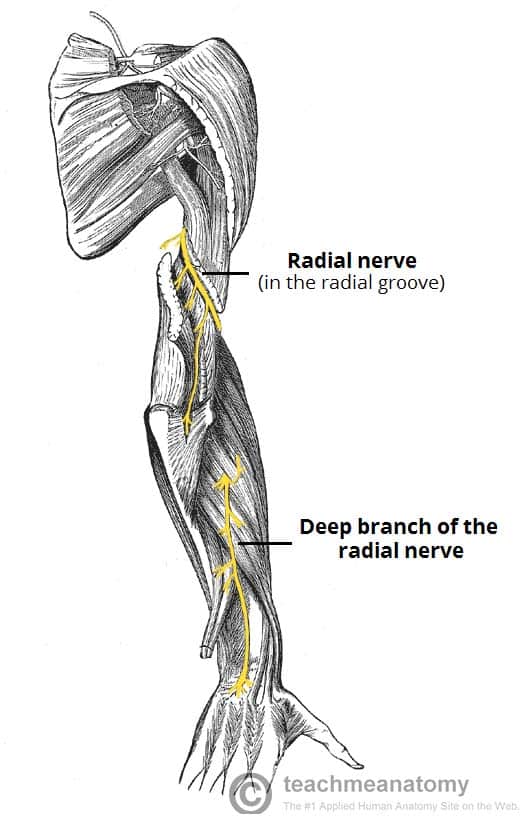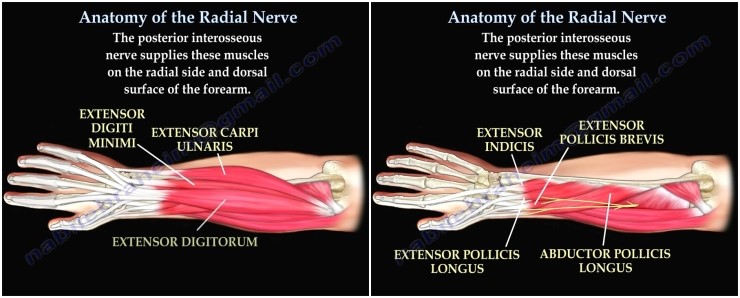Anatomy radialnerve Biology Diagrams The Radial Nerve (n. radialis; musculospiral nerve), the largest branch of the brachial plexus, is the continuation of the posterior cord of the plexus.Its fibres are derived from the fifth, sixth, seventh, and eighth cervical and first thoracic nerves.It descends behind the first part of the axillary artery and the upper part of the brachial artery, and in front of the tendons of the

Radial nerve. The radial nerve arises from ventral rami of C5 to C8 (+/- T1) and is a continuation of the posterior cord of the brachial plexus and is the largest branch of the brachial plexus, innervating almost the entire posterior side of the upper limb and provides a motor function to the extensor muscles of the forearm, wrist, fingers, and thumb.

Radial Nerve: What It Is, Function, Anatomy & Conditions Biology Diagrams
Your radial nerve takes a winding path from your lower armpit to some of your fingers. It allows you to move muscles and feel skin sensations in certain parts of your upper arm, forearm, wrist and hand. Like other peripheral nerves in your body, your radial nerve can become damaged, causing symptoms like pain and muscle weakness.

BD Chaurasia's Human Anatomy (Regional and Applied Dissection and Clinical). Vol. 1 - Upper Limb and Thorax, 8th ed., CBS Publishers, 2019. Detailed section on the radial nerve. The radial nerve is one of the major peripheral nerves of the upper limb and is crucial for both sensory and motor functions. It originates from the posterior

Radial nerve: origin, course and function Biology Diagrams
Motor function. The radial nerve innervates the muscles located in the posterior upper arm and posterior forearm. In the upper arm, it innervates the three heads of the triceps brachii - which acts to extend the arm at the elbow. The radial nerve also gives rise to branches that supply the brachioradialis and extensor carpi radialis longus (muscles of the posterior forearm).
-horz.jpg)
